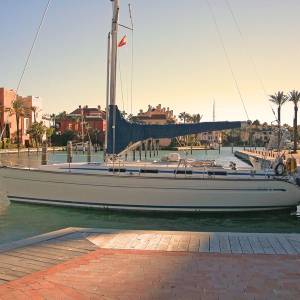
MCA Coding - Putting Your Yacht to Work
Many people dream of a life afloat funded by charter work or sailing instruction. This is perfectly possible but for British flagged vessels or foreign flagged vessels operating from UK ports the Maritime and Coastguard Agency (MCA) lays down a set of regulations that spell out all aspects from construction, equipment and manning through to safety, training and operational procedures. So make sure you comply with the regulations.
The purpose of this article is to inform owners of the legal requirements that need to be met to operate a small sailing vessel commercially. This article aims to give an initial understanding and will point towards further reading material. The "Blue Code" is the code (http://www.dft.gov.uk/mca/blue.pdf) specifically of interest as it covers sailing of up to 24 metres in length at the load line and which do not carry cargo or more than 12 passengers. Adherence to the code is signified by the issue of a Coding Compliance Certificate. This certificate is obtained by subjecting the vessel to an exhaustive survey process carried out by a properly qualified and authorised marine surveyor.
Vessels are coded with respect to areas of operation which are defined as follows:
Category 4- up to 20 miles from a safe haven, in favourable weather and in daylight;
Category 3-up to 20 miles from a safe haven;
Category 2- up to 60 miles from a safe haven;
Category 1- up to 150 miles from a safe haven;
Category 0- unrestricted service.
The lower the category the more stringent the coding requirements.
Compliance certificates are issued with a validity of five years with a nominated person (skipper or owner) able to self certify continued compliance on an annual basis. In practice this means reviewing the original compliance survey and checking that the vessels is still in compliance. Items requiring annual checks like life rafts, fire extinguishers and gas installations will need to be checked by a competent and authorised supplier.
A change of ownership of the vessel whilst the vessel is in code compliance triggers a re-certification process. This should not be too onerous if the vessels is fully compliant. However re-surveying and bureaucratic costs are unavoidable upon a change of ownership.
Even if you do not intend to operate your yacht commercially compliance with its provisions will ensure that your vessel is always operated safely.



